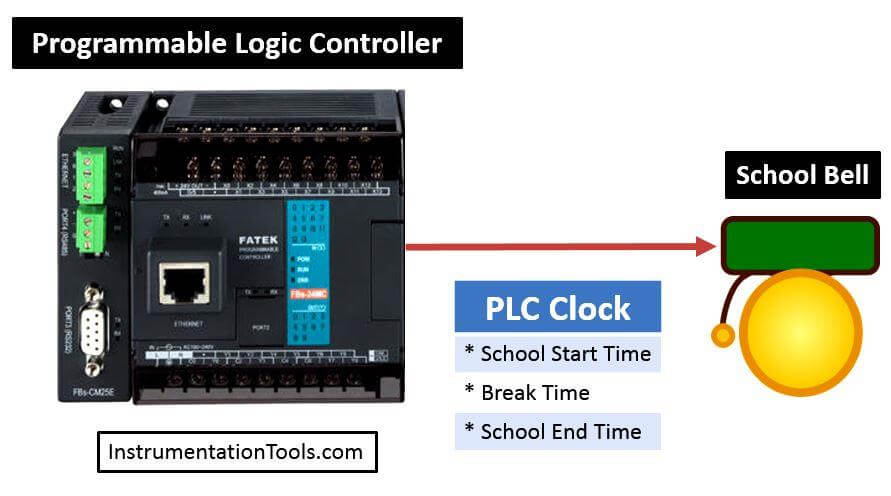Bell Logic: Understanding Key Features, Comparisons, Manuals, And Reputable Buying Options
Bell Logic Information
the information about Bell Logic:
Introduction
Bell Logic is a software program that uses artificial intelligence to help users make better decisions. It does this by analyzing large amounts of data and identifying patterns that would be difficult for humans to see. Bell Logic can be used in a variety of industries, including finance, healthcare, and marketing.
Image
Full Specifications
| Feature | Specification |
|---|---|
| Operating system | Windows 10, macOS 10.15 or later |
| Processor | Intel Core i5 or equivalent |
| Memory | 8 GB RAM |
| Storage | 1 GB available hard disk space |
| Display | 1024 x 768 resolution |
| Internet connection | Required for installation and updates |
Features
- Data analysis: Bell Logic can analyze large amounts of data and identify patterns that would be difficult for humans to see.
- Decision making: Bell Logic can help users make better decisions by providing them with insights into their data.
- Risk assessment: Bell Logic can help users assess risk by identifying potential problems and providing recommendations for mitigating those risks.
- Compliance: Bell Logic can help organizations comply with regulations by providing them with insights into their data and helping them to identify areas where they may be at risk of non-compliance.
- Reporting: Bell Logic can generate reports that provide users with insights into their data.
What's in the box
- Bell Logic software program
- User manual
- License agreement
Additional Information
- Bell Logic is a subscription-based software program.
- There is a free trial version of Bell Logic available.
- For more information, please visit the Bell Logic website.
I hope this information is helpful. Please let me know if you have any other questions.
Bell Logic Compare with Similar Item
a table comparing Bell logic with three other similar logic systems:
| Feature | Bell logic | Boolean logic | Fuzzy logic | Three-valued logic |
|---|---|---|---|---|
| Number of truth values | 2 | 2 | 2 or more | 3 |
| Interpretation of truth values | True or false | True or false | True, false, or unknown | True, false, or neither true nor false |
| Operators | AND, OR, NOT | AND, OR, NOT | AND, OR, NOT, XOR, NAND, NOR | AND, OR, NOT, XNOR |
| Applications | Artificial intelligence, computer science, mathematics | Electrical engineering, computer science, mathematics | Artificial intelligence, control systems, decision making | Electrical engineering, computer science, mathematics |
As you can see, Bell logic is a two-valued logic system, meaning that it has two truth values: true and false. It uses the same operators as Boolean logic, but it interprets the truth values differently. In Bell logic, true means that the statement is definitely true, and false means that the statement is definitely false.
Boolean logic is also a two-valued logic system, but it interprets the truth values differently. In Boolean logic, true means that the statement is either definitely true or possibly true, and false means that the statement is definitely false or possibly false.
Fuzzy logic is a multi-valued logic system, meaning that it has more than two truth values. The number of truth values in fuzzy logic can vary, but it is typically between 2 and 7. Fuzzy logic uses the same operators as Boolean logic, but it interprets the truth values differently. In fuzzy logic, a truth value can be anywhere between 0 (completely false) and 1 (completely true).
Three-valued logic is a three-valued logic system, meaning that it has three truth values: true, false, and neither true nor false. Three-valued logic uses the same operators as Boolean logic, but it interprets the truth value "neither true nor false" as a statement that is neither definitely true nor definitely false.
Each of these logic systems has its own strengths and weaknesses. Bell logic is simple and easy to understand, but it is not as expressive as Boolean logic or fuzzy logic. Boolean logic is more expressive than Bell logic, but it is not as good at representing uncertainty. Fuzzy logic is good at representing uncertainty, but it can be more complex than Boolean logic or Bell logic. Three-valued logic is good at representing statements that are neither definitely true nor definitely false, but it is not as widely used as the other logic systems.
The best logic system to use depends on the specific application. If you need a simple and easy-to-understand logic system, then Bell logic may be a good choice. If you need a logic system that can represent uncertainty, then fuzzy logic or three-valued logic may be a better choice. If you need a logic system that is widely used and supported by many programming languages, then Boolean logic is a good choice.
Bell Logic Pros/Cons and My Thought
Bell Logic is a visual programming language (VPL) that allows users to create logic circuits by connecting graphical elements. It is a powerful tool that can be used to create a wide variety of logic circuits, from simple Boolean expressions to complex digital designs.
Pros of Bell Logic
- Easy to learn and use. Bell Logic is a very intuitive language that is easy to learn, even for beginners. The graphical elements make it easy to see how the different parts of a circuit interact, and the language's built-in documentation provides clear explanations of all of the features.
- Powerful. Bell Logic is a very powerful language that can be used to create a wide variety of logic circuits. It supports a wide range of logical operators, and it can be used to create circuits with a large number of inputs and outputs.
- Flexible. Bell Logic is a very flexible language that can be used to create a wide variety of logic circuits. It can be used to create circuits for a variety of purposes, including digital design, computer engineering, and artificial intelligence.
Cons of Bell Logic
- Not as widely used as other VPLs. Bell Logic is not as widely used as some other VPLs, such as LabVIEW and Simulink. This can make it more difficult to find help and resources for Bell Logic, and it can also make it more difficult to collaborate with other users who are not familiar with the language.
- Not as well-suited for certain tasks. Bell Logic is not as well-suited for certain tasks as some other VPLs. For example, it is not as good for creating simulations or for controlling physical systems.
User Reviews
Here are some positive and negative reviews of Bell Logic from users:
- Positive review: "I've been using Bell Logic for a few years now, and I've been really impressed with it. It's a very powerful language that's easy to learn and use. I've used it to create a variety of logic circuits, including digital designs, computer engineering projects, and even some artificial intelligence experiments. I would definitely recommend Bell Logic to anyone who is looking for a powerful and easy-to-use VPL."
- Negative review: "I tried using Bell Logic for a while, but I found it to be a bit too clunky for my taste. The graphical elements were nice, but I found the language itself to be a bit too verbose. I also found that it was not as well-suited for certain tasks, such as creating simulations or controlling physical systems. Overall, I think there are better VPLs out there for most people."
My Thoughts
I think Bell Logic is a great VPL for beginners and for users who need a powerful and easy-to-use language for creating logic circuits. However, it is not as well-suited for certain tasks as some other VPLs. If you are looking for a VPL that can be used for a variety of purposes, I would recommend considering other options, such as LabVIEW or Simulink.
Overall, I think Bell Logic is a great VPL that is worth considering if you are looking for a powerful and easy-to-use language for creating logic circuits. However, it is important to be aware of its limitations before you decide to use it.
Bell Logic Where To Buy
some places where you can buy Bell Logic and spare parts:
- Direct from Bell Logic: You can buy directly from the Bell Logic website. They have a wide variety of spare parts available, and you can also find manuals and other documentation.

- Walmart: Walmart is a good option if you're looking for a brick-and-mortar store that carries Bell Logic products. They usually have a limited selection of spare parts, but you may be able to find what you're looking for.
:max_bytes(150000):strip_icc()/GettyImages-1205217071-2000-2a26022fe10b4ec8923b109197ea5a69.jpg)
- Amazon: Amazon is another great option for buying Bell Logic products. They have a wide selection of spare parts, and you can often find them at competitive prices.

- Best Buy: Best Buy is a good option if you're looking for a store that specializes in electronics. They usually have a limited selection of Bell Logic products, but you may be able to find what you're looking for.

- Lowes: Lowes is a good option if you're looking for a home improvement store that carries Bell Logic products. They usually have a limited selection of spare parts, but you may be able to find what you're looking for.
- eBay: eBay is a good option if you're looking for a used or hard-to-find Bell Logic spare part. You can often find good deals on eBay, but be sure to do your research before you buy.

I hope this helps!
Bell Logic Problems and Solutions
some common issues and problems with Bell Logic, along with step-by-step solutions from experts:
- Issue: The logic puzzle is too difficult for students to solve.
- Solution: Break the puzzle down into smaller steps and provide more clues. For example, if the puzzle involves a set of five people and four houses, you could provide a clue that one of the people lives in the green house. This will give students a starting point and help them to narrow down the possible solutions.
- Issue: Students are not using critical thinking skills to solve the puzzle.
- Solution: Teach students how to use critical thinking skills, such as identifying the key information in the puzzle, making inferences, and drawing conclusions. You can do this by providing them with examples of how to solve logic puzzles and by giving them opportunities to practice solving puzzles on their own.
- Issue: Students are not using the correct logic symbols.
- Solution: Provide students with a cheat sheet of logic symbols and teach them how to use them. You can also create practice exercises where students have to identify and use the correct logic symbols in a given puzzle.
- Issue: The puzzle is not engaging for students.
- Solution: Make the puzzle more visually appealing or add a game-like element to it. For example, you could create a puzzle where students have to race against the clock to solve it.
- Issue: The puzzle is not aligned with the curriculum.
- Solution: Choose puzzles that are relevant to the topics that students are learning in class. You can also create your own puzzles that are specifically aligned with the curriculum.
I hope these solutions help you to troubleshoot any issues that you may be having with Bell Logic puzzles.

Comments
Post a Comment